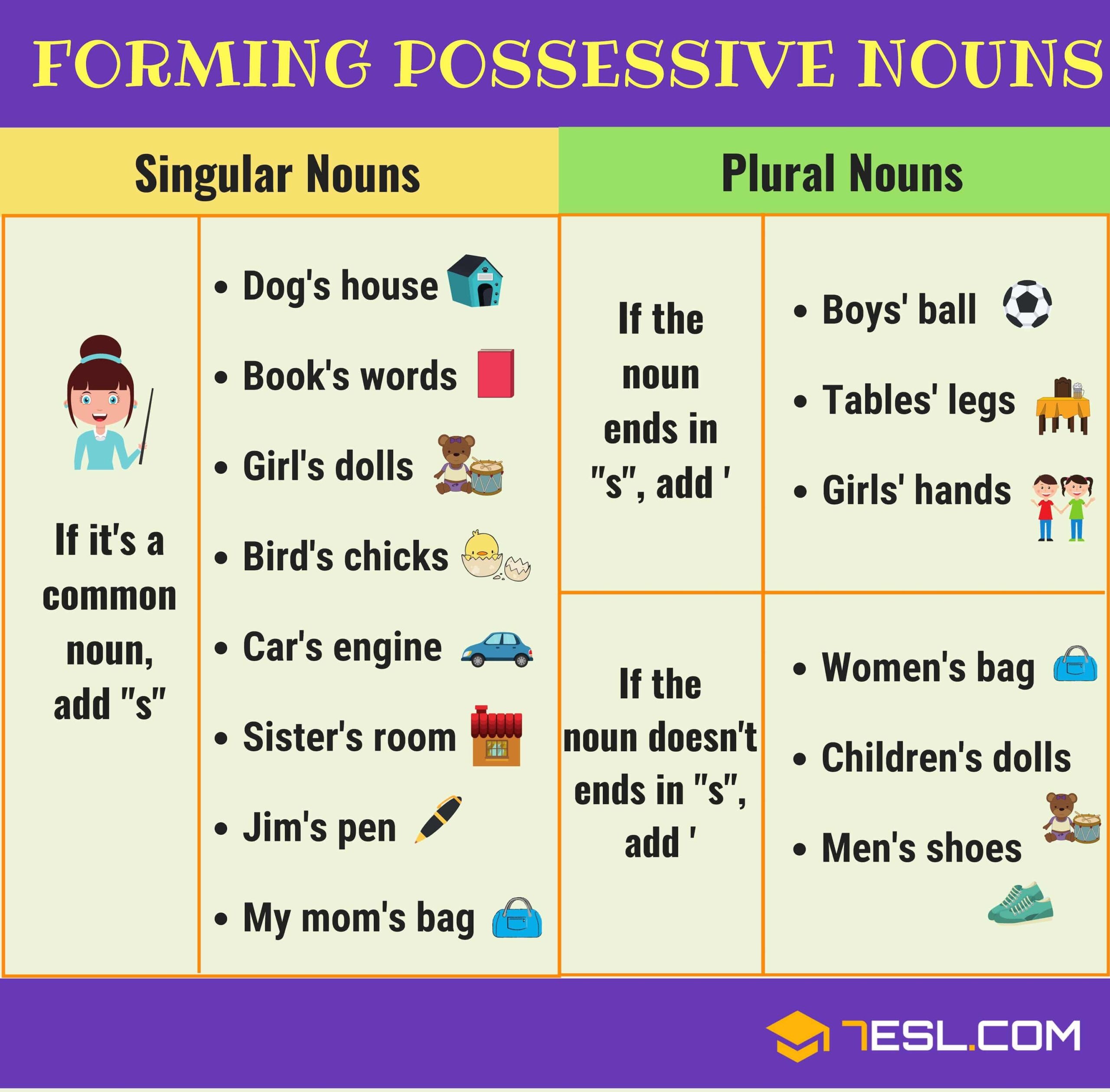When it comes to grammar, the possessive case is a crucial concept to understand. It is used to show ownership or possession of something. By adding an apostrophe and an “s” to a noun, we can indicate that something belongs to someone or something else.
Learning about possessive case examples can help you become more familiar with how to use it correctly in your writing. Let’s explore some examples to see how it works in different contexts.
Possessive Case Examples
1. The dog’s tail wagged happily as he greeted his owner at the door. In this sentence, “dog’s” is the possessive form of the noun “dog,” indicating that the tail belongs to the dog.
2. Sarah’s car is parked in the driveway. Here, “Sarah’s” shows that the car belongs to Sarah.
3. The students’ books were neatly stacked on the shelves. In this example, “students'” indicates that the books belong to the students collectively.
4. The company’s profits have increased significantly this quarter. “Company’s” shows that the profits belong to the company.
5. The cat’s meow could be heard from across the room. In this sentence, “cat’s” indicates that the meow belongs to the cat.
By using possessive case examples like these, you can see how adding an apostrophe and an “s” to a noun can signify ownership or possession. It is essential to use the possessive case correctly to avoid confusion in your writing.
Remember that the possessive case is not limited to just nouns; it can also be used with pronouns. For example, “his,” “her,” “its,” “our,” “their,” and “whose” are all examples of possessive pronouns that show ownership or possession.
Next time you are writing, pay attention to how you use the possessive case to ensure your sentences are clear and accurate. Practice using possessive case examples to improve your grammar skills and convey your ideas effectively.
Understanding possessive case examples is a valuable skill that can enhance your writing and communication. By mastering this concept, you can express ownership and possession accurately in your sentences. Keep practicing and incorporating possessive case examples into your writing to strengthen your grammar skills.
